
Twenty years later, The Sopranos remembered fondly
Interest in groundbreaking show rekindled with recollections and plans for a big-screen prequel with James Gandolfini’s son in the cast
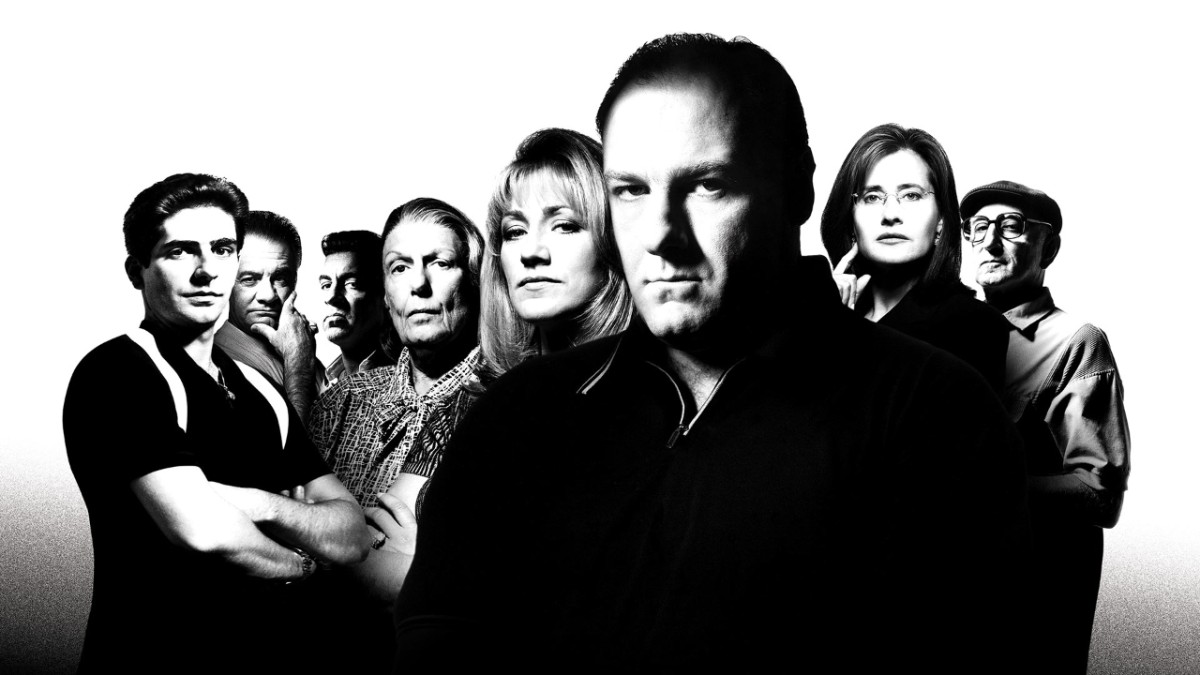
Twenty years ago, The Sopranos television crime series began airing on HBO, featuring a fictional New Jersey Mafia boss and his family, reigniting public interest in the Mafia and popularizing cultural references such as “gabagool.”
This month has been marked by remembrances, especially among those who revere the groundbreaking cable series, which covered 86 episodes from January 1999 to June 2007. The show won 21 Emmys and is being developed into a Sopranos movie prequel.
Many recent recollections and anniversary news stories centered on actor James Gandolfini, who portrayed Tony Soprano, the hefty, balding lead character, an intolerant, temperamental, violent antihero with a vulnerable (but not very soft) side. Gandolfini died in 2013 at age 51 of a heart attack while vacationing in Rome before a scheduled appearance at the Taormina Film Festival in Sicily. His son, Michael Gandolfini, will play a young Tony Soprano in the upcoming movie.
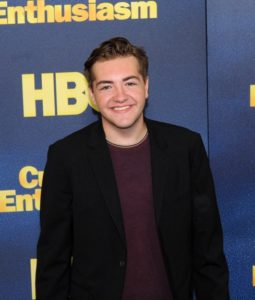
Edie Falco, who played Tony Soprano’s wife, Carmela, a strong, perceptive character holding the family together during constant difficulties, remembered him in a January 10 news story on the ET website as an exceptional actor who also was down to earth and a joy to be around. Falco joined other cast members for a 20th anniversary panel discussion at the SVA Theater in New York.
“He was so humble in the face of how great he was,” Falco said. “The humility added to just how much fun he was to be with.”
Years earlier, during the show’s auditioning process, Gandolfini, a Rutgers University graduate who described himself as “a 260-pound Woody Allen,” suspected the Tony Soprano role would go to a matinee idol.
“I thought that they would hire some good-looking guy, not George Clooney but some Italian George Clooney, and that would be that,” Gandolfini said in a 2012 story on the Vanity Fair website.
In the same online story, series creator David Chase, who had given some thought to Robert De Niro in the role if it had been a movie, realized right away that Ganfolfini would be the perfect Tony Soprano.
“It was audition after audition — a lot of people went up for that role,” Chase said of the casting process. “As a matter of fact, they don’t like you to bring in one person—they want to have some input. So three people were brought to HBO for the role of Tony, and Jim was one of them. And when Jim Gandolfini walked in, that was it.”
Use of the “Soprano” name came about through Chase family connections. As it turns out, Chase’s father ran a hardware store with a business partner related to real-life Sopranos. “My father’s business partner had a kid my age named Robert Caselli. And Robert Caselli’s cousin — their family name was Soprano,” Chase said.
Coming up with a name apparently was not as complicated as getting network executives to buy into the story. The concept went nowhere until it was pitched to HBO. HBO’s then co-president Richard Plepler, now the company’s chairman and chief executive officer, remembered the pitch.
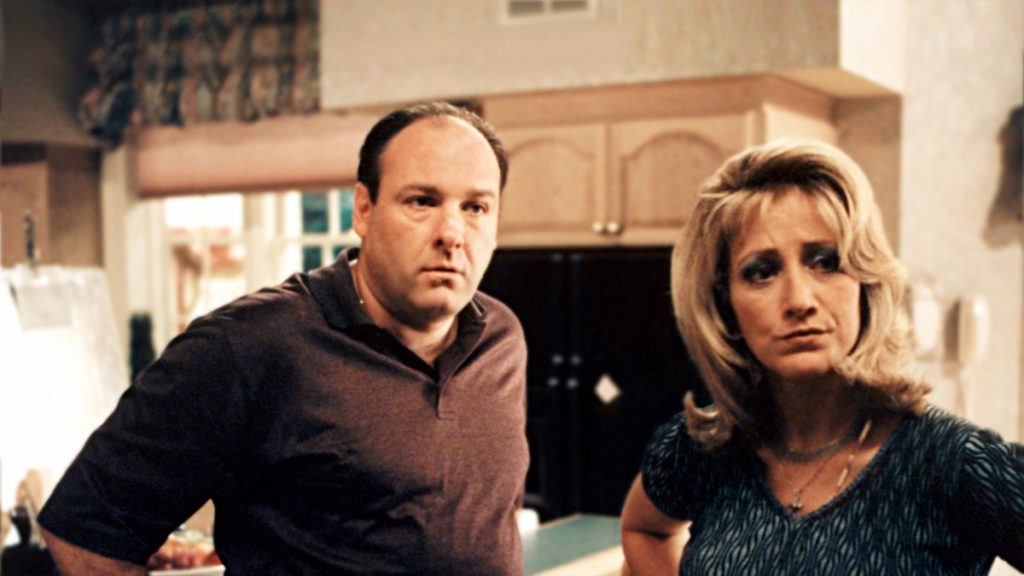
“They came in here and said, ‘Here’s the idea: 40-year-old guy, crossroads of his life, turmoil in his marriage, turmoil in his professional career, beginning to raise teenage kids in modern society — all the pressures of every man in his generation. The only difference is he’s the Mob boss of northern New Jersey. Oh, by the way, he’s seeing a shrink.’ ”
Gandolfini noted that having Tony Soprano attend therapy sessions is similar to the use of a Greek chorus in stage productions: It ties the plot threads together, helping the audience make sense of everything. The role of the therapist, Dr. Jennifer Melfi, was played by Lorraine Bracco as a study in patience and constraint.
“I think you cared about Tony because David (Chase) was smart enough to write the Greek chorus, through Dr. Melfi,” Gandolfini said. “So you sat there and you got to see his motives, what he was thinking, what he was trying to do, what he was trying to fix, what he was trying to become. And then you saw it didn’t really work out the way he wanted it to. If you took the Melfi scenes away, you wouldn’t care about this man as much, or care about anything that was happening to him.”
Scott M. Deitche, author of 2017’s Garden State Gangland: The Rise of the Mob in New Jersey, said the program was “a watershed show from an artistic and cultural perspective.”
“It really expanded the bounds of a series and how to develop characters and story arcs,” said Deitche, a member of The Mob Museum’s advisory council.
In many ways, including those Tony Soprano therapy sessions, the show’s authenticity was one of its creative hallmarks. In the real world, for instance, New York crime lord Frank Costello, who died in 1973, actually did see a psychiatrist, Dr. Richard H. Hoffman, who treated the mobster “over his feelings of social inadequacy,” according to Anthony M. DeStefano’s 2018 book Top Hoodlum: Frank Costello, Prime Minister of the Mafia.
The real-world similarities extended into at least one cast member’s own background. Tony Sirico, who played wiseguy Paul “Paulie Walnuts” Gualtieri, did time in prison during his earlier years and, after starring on the show, was the subject of a New York newspaper story suggesting he and other actors attended a 1999 Christmas party “with made members of the Colombo crime family” at Il Cortile, a restaurant on Mulberry Street in New York’s Little Italy.
According to the Daily News, Sirico did not recall being at that party but didn’t rule it out. The criminal-turned-actor said he had been to “so many dinners and parties and charities, I have no idea.”
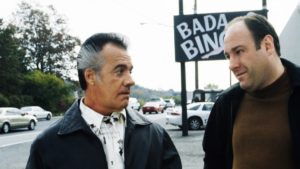
“I don’t want to be mixed up with a lot of bad guys,” Sirico added.
Though the show ended more than a decade ago, the actors have remained popular. An example is a skit that popped up on YouTube a few years ago with Sirico and Bracco portraying the judges in a Brooklyn “Italian Spelling Bee,” applauding the contestants for spelling the names of food items — mozzarella, marinara — the way some might pronounce them: “mutzadel, “madanad.”
Food played such a prominent role in the series that HBO’s 2007 companion publication The Sopranos: The Book offers a food glossary, including items such as gabagool (phonetic for sliced capicola, “a spicy boiled ham” or “more generally for a variety of sliced cold cuts”) and gravy (“old school Italian-American for tomato sauce”).
Just as The Godfather novel and movies ignited the general public’s fascination with the Mafia 50 years ago, The Sopranos helped revive a new generation’s interest.
Last year, for instance, HBO aired The Deuce, a docudrama crime series that dealt in part with Mafia control of vice rackets near New York’s Times Square during the 1970s, and just after the start of the new year in 2019, MTV began airing Made in Staten Island, a reality show featuring Mob turncoat Sammy “The Bull” Gravano’s granddaughter, 19-year-old Karina Seabrook. According to the New York Post, the show “follows Seabrook and a dozen other local teenagers and early-twenty-somethings grappling with whether they can fully escape their families’ criminal backgrounds as they enter adulthood.”
Also, at least two big-budget Mafia movies are in the works, including David Chase’s Sopranos prequel, The Many Saints of Newark, and Martin Scorsese’s The Irishman, regarding the 1975 disappearance of former labor leader Jimmy Hoffa. While The Irishman is set to be released later in 2019, casting is still underway for The Many Saints of Newark.
The Sopranos prequel is set in Newark, New Jersey, during lethal racial turmoil in the 1960s, according to a January 14 story in The Hollywood Reporter.
Michael Gandolfini is one of several actors on board for the prequel, including Cory Stoll, Billy Magnussen, Jon Bernthal, Alessandro Nivola and Vera Farmiga, according to a January 22 story on the Variety magazine website.
Among other roles, Michael Gandolfini has appeared in HBO’s The Deuce as Joey Dwyer.
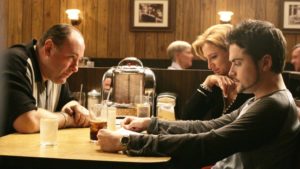
“It’s a profound honor to continue my dad’s legacy while stepping into the shoes of a young Tony Soprano,” Gandolfini said. “I’m thrilled that I am going to have the opportunity to work with David Chase and the incredible company of talent he has assembled for The Many Saints of Newark.”
Publicity surrounding the 20th anniversary of The Sopranos, and anticipation over the movieprequel, has fans going online to discuss issues large and small. Some of the trivia: Before she was famous, Lady Gaga as a teenager had a bit part in the series; Tony Soprano’s visit to Las Vegas included scenes shot in Caesars Palace.
A bigger issue, which has gained traction again after all these years, is whether Tony Soprano dies in the final scene while waiting in Holsten’s Ice Cream Parlor with his family for daughter Meadow Soprano, played by Jamie-Lynn Sigler, to parallel park outside and join them. Seated at a booth in the Bloomfield, New Jersey, diner, the family shares onion rings as Journey’s “Don’t Stop Believin’ ” plays in the background, while a suspicious man in a Members Only jacket heads to the restroom — when the screen abruptly goes black and silent.
Larry Henry is a veteran print and broadcast journalist. He served as press secretary for Nevada Governor Bob Miller, and was political editor at the Las Vegas Sun and managing editor at KFSM-TV, the CBS affiliate in Northwest Arkansas. Henry taught journalism at Haas Hall Academy in Bentonville, Arkansas, and now is the headmaster at the school’s campus in Rogers, Arkansas. The Mob in Pop Culture blog appears monthly.
Feedback or questions? Email blog@themobmuseum.org





